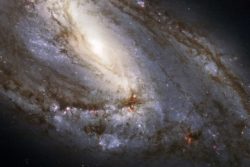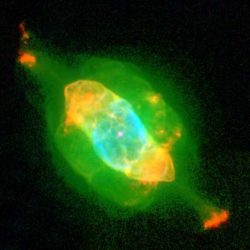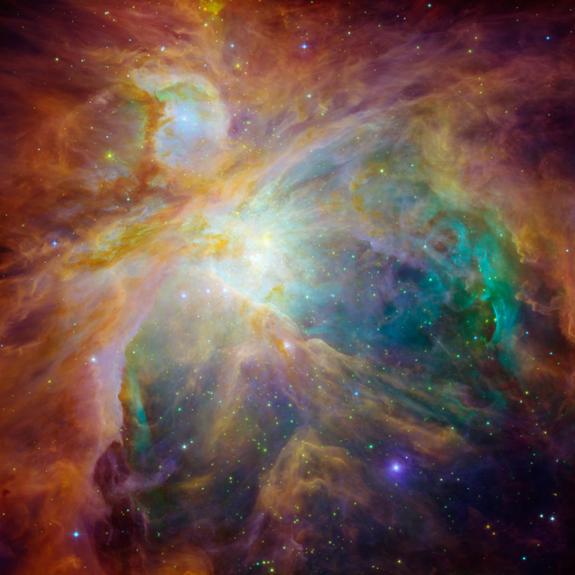Astronomy Picture of the Week – NGC 1999 Nebula
This photo of nebula NGC 1999 was taken by the Hubble Space Telescope in December 1999. It is a good example of a reflection nebula. Just like fog around a street lamp, a reflection nebula shines only because a light source illuminates its dust and the nebula does not emit any visible light of its own. The main light source of this nebula is a recently formed star, visible in this photo near the center. This young star is cataloged as V380 Orionis, and its white color is due to its high surface temperature of about 10,000 degrees Celsius (nearly twice that of our own Sun). Its mass is estimated…
Astronomy Picture of the Week – Unusual Spiral Galaxy M66
This is a photo of an unusual spiral galaxy called M66, or NGC 3627, taken by the Hubble Telescope. It lies about 35 million light years from Earth and it spans 100,000 light years. At a first glance, this galaxy looks familiar. Why? Well, because it is similar to our own galaxy, the Milky Way. Both galaxies are spirals. However, what’s really unusual about this one is that it is asymmetric. Usually the force of gravity of a mega black hole (or group of mega black holes) attracts all the stars and interstellar gas in a symmetric pattern. If the mega black hole is not originally in the center of…
Astronomy Picture of the Week – Nebula NGC 7009
This odd greenish nebula, called NGC 7009 or the Saturn Nebula, is the result of a star similar to our sun going nova. Since then, a bright new star was born from the gases of its predecessor. It can be seen in the center of the nebula, inside the bluish sphere of gas. The nebula is located 1,400 light-years away in the constellation of Aquarius. The picture was taken by the Hubble Space Telescope. Image Credits: NASA and Hubble Space Telescope
Astronomy Picture of the Week – The Orion Nebula
This is an awesome picture of the Orion Nebula taken by the Hubble Telescope. The Orion Nebula is located 1,500 light-years away from Earth. Astronomers believe it contains over a thousand young stars.




